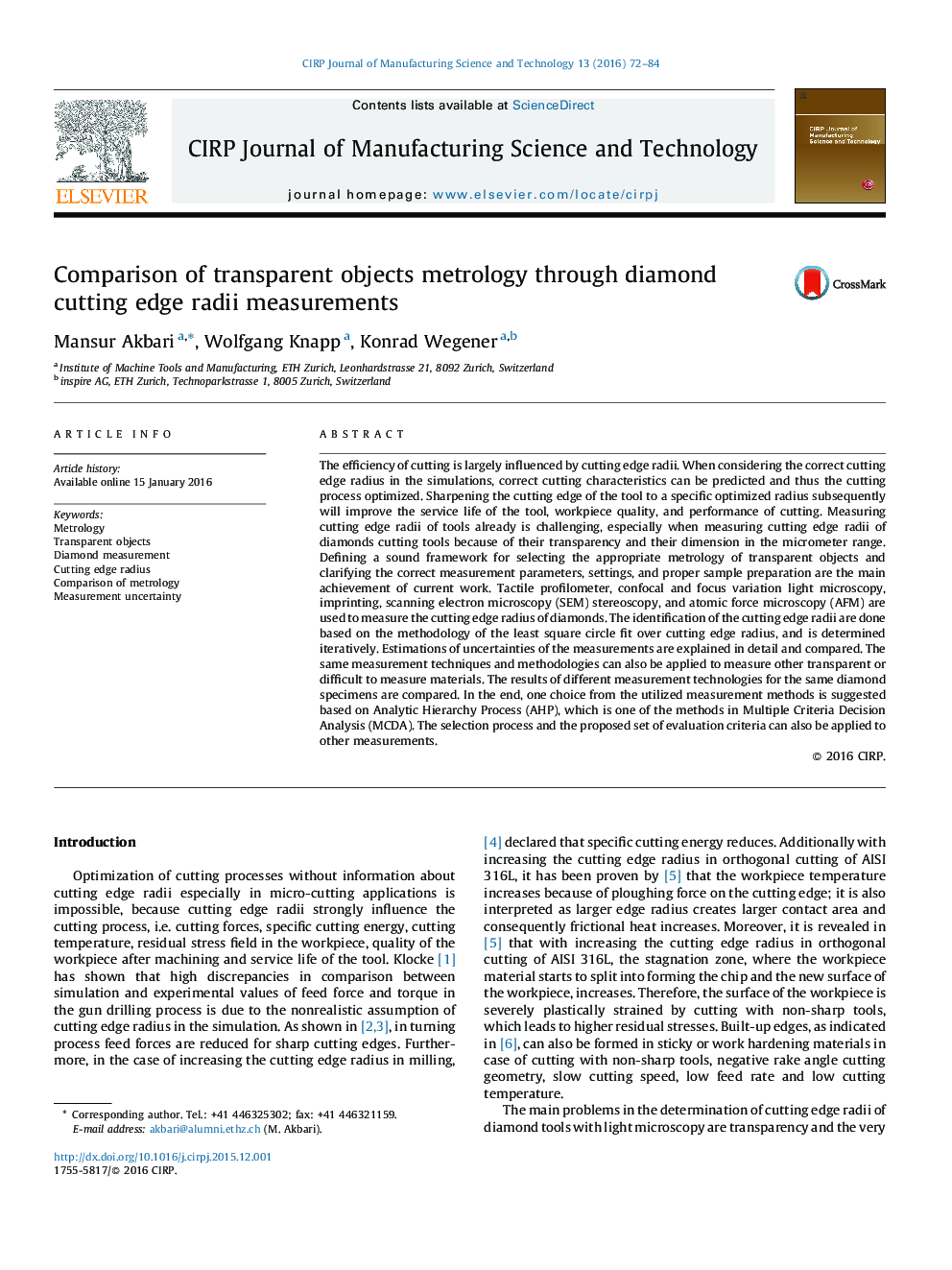| Article ID | Journal | Published Year | Pages | File Type |
|---|---|---|---|---|
| 1679482 | CIRP Journal of Manufacturing Science and Technology | 2016 | 13 Pages |
The efficiency of cutting is largely influenced by cutting edge radii. When considering the correct cutting edge radius in the simulations, correct cutting characteristics can be predicted and thus the cutting process optimized. Sharpening the cutting edge of the tool to a specific optimized radius subsequently will improve the service life of the tool, workpiece quality, and performance of cutting. Measuring cutting edge radii of tools already is challenging, especially when measuring cutting edge radii of diamonds cutting tools because of their transparency and their dimension in the micrometer range. Defining a sound framework for selecting the appropriate metrology of transparent objects and clarifying the correct measurement parameters, settings, and proper sample preparation are the main achievement of current work. Tactile profilometer, confocal and focus variation light microscopy, imprinting, scanning electron microscopy (SEM) stereoscopy, and atomic force microscopy (AFM) are used to measure the cutting edge radius of diamonds. The identification of the cutting edge radii are done based on the methodology of the least square circle fit over cutting edge radius, and is determined iteratively. Estimations of uncertainties of the measurements are explained in detail and compared. The same measurement techniques and methodologies can also be applied to measure other transparent or difficult to measure materials. The results of different measurement technologies for the same diamond specimens are compared. In the end, one choice from the utilized measurement methods is suggested based on Analytic Hierarchy Process (AHP), which is one of the methods in Multiple Criteria Decision Analysis (MCDA). The selection process and the proposed set of evaluation criteria can also be applied to other measurements.
